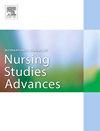流行病学研究中心八项抑郁量表(csd -8)阿拉伯语版的心理测量学评估:评估抑郁的具体文化考虑
IF 3.1
Q1 NURSING
International Journal of Nursing Studies Advances
Pub Date : 2025-06-01
DOI:10.1016/j.ijnsa.2025.100310
引用次数: 0
摘要
尽管流行病学研究中心对抑郁量表(CESD)进行了广泛的评估,但其最短版本,即八项版本(CESD-8)的研究较少,绝对缺乏关于其在阿拉伯世界的心理测量特性的信息。方法采用匿名在线调查的方法,对沙特阿拉伯学生(N = 979、422)和员工(N = 314)的数据进行探索性因子分析、验证性因子分析和多组分析,检验CESD-8的结构和测量不变性。收敛效度和内部一致性测试涉及将csd -8与其子量表、项目分析测量和类内相关性相关联。标准效度测试涉及将CESD-8及其子量表与单项幸福测量相关联。结果探索性因子分析产生两个因子(消极影响和积极影响),特征值为>;1,解释了86.4%的方差。在验证性因子分析中,原始的探索性因子分析模型具有较好的拟合效果,而通过将积极情绪项(CESD4和CESD6)的残差相关联,提高了一维CESD-8与另一个双因子结构(抑郁情绪和躯体抱怨)的拟合效果。三因素模型(抑郁情绪、躯体抱怨和积极情绪)在没有误差相关性的情况下表现出最佳拟合。该模型在学生和雇员、性别和年龄群体中是不变的。量表及其三个维度表现出足够的内部一致性(alpha系数范围= 0.65-0.89),收敛效度(项目总相关范围= 0.43-0.80,与CESD-8的相关范围= -0.68-0.92)和标准效度(与幸福得分的相关范围= -0.40-0.60)。结论csd -8是一份有效的抑郁精神病理快速鉴别短量表。使用CESD-8来检测异质性抑郁症状,而不是将抑郁症作为一种整体状况进行评估,可能会影响我们对特定群体/文化中抑郁症的动态和治疗的理解,重点是阿拉伯人对抑郁症的定义中缺乏积极影响。需要在不同的文化中复制三因素结构。本文章由计算机程序翻译,如有差异,请以英文原文为准。
Psychometric evaluation of the Arabic version of the Eight-item Center for Epidemiological Studies Depression Scale (CESD-8): Specific cultural considerations for the assessment of depression
Background
Despite extensive evaluations of the Center for Epidemiological Studies Depression Scale (CESD), its shortest version, the Eight-Item version (CESD-8), is less investigated, with absolute lack of information on its psychometric properties in the Arab world.
Methods
To fill the gap, data collected via an anonymous online survey from Saudi samples of students (N = 979, 422) and employees (N = 314), were analyzed through exploratory factor analysis, confirmatory factor analysis, and multigroup analysis to examine the structure and measurement invariance of the CESD-8. Convergent validity and internal consistency tests involved correlating the CESD-8 with its subscales, item analysis measures, and intra class correlations. Criterion validity tests involved correlating the CESD-8 and its subscales with a single-item measure of happiness.
Results
Exploratory factor analysis produced two factors (negative affect and positive affect) with eigen values >1, which explained 86.4 % of the variance. In confirmatory factor analysis, the crude exploratory factor analysis model had good fit while the fit of the unidimensional CESD-8 and another two-factor structure (depressed affect and somatic complaints) was improved by correlating the residuals of the items of positive affect (CESD4 and CESD6). A three-factor model (depressed affect, somatic complaints, and positive affect) expressed the best fit in the absence of error correlations. This model was invariant across groups of students and employees, gender, and age. The scale and its three dimensions demonstrated adequate internal consistency (alpha coefficient range = 0.65–0.89), convergent validity (item total correlation range = 0.43–0.80 and range of correlations with the CESD-8 = -0.68–0.92), and criterion validity (range of correlations with happiness scores = -0.40–0.60).
Conclusions
The CESD-8 is a valid short scale for quick identification of people with depressive psychopathologies. Using the CESD-8 to detect heterogenous depressive symptoms, rather than assessing depression as a whole condition, may influence our understanding of the dynamics and treatments of depression in specific groups/cultures, with emphasis on absence of positive affect in the definition of depression among Arabs. Replications of the three-factor structure in different cultures are needed.
求助全文
通过发布文献求助,成功后即可免费获取论文全文。
去求助
来源期刊

International Journal of Nursing Studies Advances
Nursing-General Nursing
CiteScore
5.80
自引率
0.00%
发文量
45
审稿时长
81 days
 求助内容:
求助内容: 应助结果提醒方式:
应助结果提醒方式:


